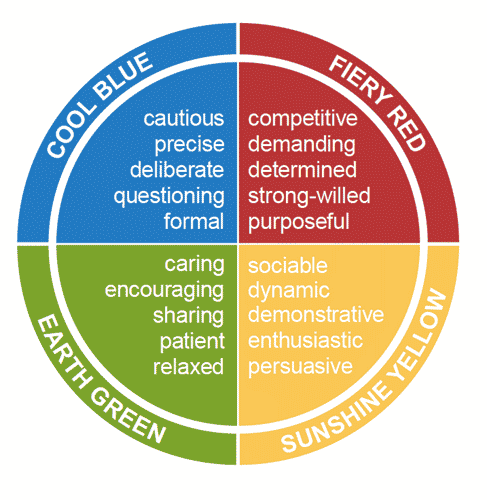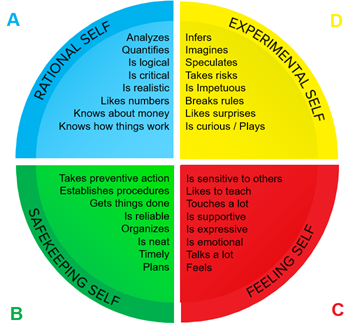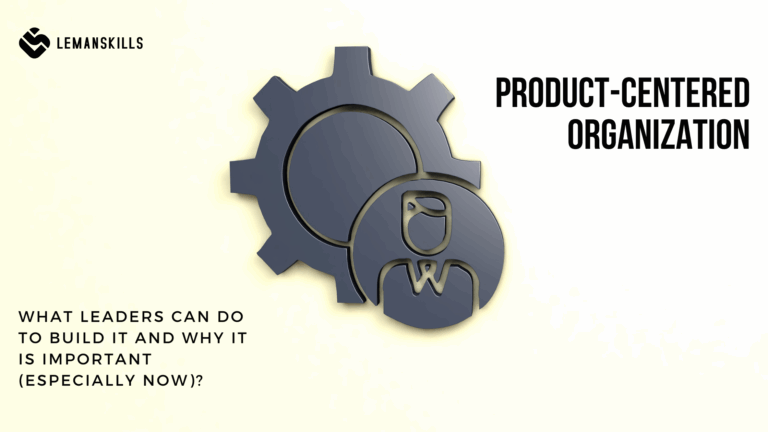Being a trainer is one of my favorite things in the entire world. I love watching people listen, reflect, try to do things differently, making conclusions and grow. One of the best moments in the process of teaching others is this time at the end of the session, or after it when I get feedback and see that it was something valuable for others. That every person found at least one thing that they’re taking with them to use in a real life. This is the best feeling I can imagine as a trainer.
But how to do this? How to create a learning environment, the experience that will allow people you want to teach to have one AHA moments after another, to give them something that will stick with them after the course/class/e-learning/webinar/lecture?
How to be a trainer or a teacher that people remember and use what they’ve learned during the learning experience you provide for them? Let’s find out together using 5 elements that definitely helped me during my journey.
1. Trainer is not the smartest person on the planet.
A trainer, teacher, coach, mentor – literally every person who teach or support others in any way is somebody who can influence peoples’ lives, inspire, trigger to change a way of thinking or behaving. And all of those figures need to have a certain amount of knowledge and experience to be a partner for other people, to work and support them. But it doesn’t mean that we need to behave like the smartest people on the whole planet.
Trainer’s role is to create an environment where people can leave old beliefs or convictions, learn new things, rebuild or build new skills, answer questions that’ll lead to better conclusions. There is a need for trust and safety, because only that way we can take risks of not being perfect, sometimes vulnerable. If a trainer doesn’t create that space, the learning process is not going to be effective. So if we make a training session, workshop or a mentoring 1:1 meeting only about us, maybe we should check our own needs. Maybe one or more hungers are frustrated and that’s how we compensate it?
Learning process is for other people: we are guides, companions on a learning journey. And yes, we share our experiences, mistakes, conclusions, things we did differently after we’ve learned. But those are examples that we use to support the flow of the process, not the essence of the whole thing.
2. Don’t assume, ask.
We often think that we know for sure what other people need, what they want to learn or how they want to change in their lives.
These are assumptions.
We assume based on our own needs, experiences, frustrations, struggles. And the intention is mostly good – we want others to have a better, easier life. We believe that based on what we’ve experienced we can share it with others, ease their pain or help them to avoid a certain scenario. A lot of trainers, coaches or speakers started that way. And it’s a great base, to share what we know, what we’ve experienced, because it’s always going to be authentic.
But to be great trainers, we need to ask people what they need. Assuming is one of the worst things we can do. Why? Because we are going to spend so much time on creating a workshop/webinar/e-learning course based on what we assume people might need, and after all of this effort (time, money, learning how to create a course etc.) it can appear that no one comes, or signs up, or after the session the participants don’t have any take-outs. Because it didn’t suit their hungers.
Ask questions. Even if it’s a one or two short ones. You can do it before, you can do it at the very beginning of the session. Check with your audience, regardless of its number – it can be one person, it can be a thousand. Stay curious, don’t be fooled only by the thoughts in your head.
3. Trainer is for people, not the other way around.
This one is strictly connected with the first point. If learning experience you create is about you, you are not serving people, they are serving your ego. When people decide to come to your training or webinar, they invest time – the most valuable currency in the whole world. They are here because they want to learn, they want to make a change or to get the courage they didn’t have before.
Trainer should be a person who cares about the learning experience, about the gains for the participants and getting them to achieve their goals. I saw so many trainers that made all of the workshop about themselves, their goals, their career, their experiences. And as mentioned before – it’s fine to share, that’s why we are in this role. But let’s use Pareto ratio – 20% of your life, 80% of participants’.
4. Use knowledge about personalities and preferences.
A lot of times when we do an open enrolment webinar or lecture we don’t know before the session who is going to participate. We can have some information about the target group, but if we don’t know those people really well, it’s impossible to cut the experience to measure and create one-size-fits-all situation.
But having basic knowledge about personality types and thinking preferences allows us to take into consideration all of the interests and just be mindful about different needs people can have. And in 90% of the cases will have, because we are all individuals.
Use the knowledge about personality types (you can use Insight Discovery or DISC Model for instance). The model is secondary, the point is you can tell after a short observation who is in your classroom (virtual or in person). If you work online with a bigger group, you can assume that the representants of all types will be there, so you need to work on the communication process to cover every basic need of your audience.

Thinking preferences is the second thing you can take into consideration while working with a group of people. I would use the same approach as with the personality types – it is all connected, but this one put emphasis on something different. HBDI tool (Hermann Brain Dominance Instrument) uses more of a neurological perspective, information about how our brain works and what is the connection of all of that with a certain behavior, communication, problem solving and decision-making processes.

Assume that all of the quadrants are there when you create a learning opportunity for others. It’s easy to get biased and go with the similarity one – to assume that what works for us, is going to work for all of the people in the room.
Be smart, use the knowledge and include everyone so they all have something for themselves after the session with you.
5. Be mindful, all the time.
Nowadays it’s extremely easy to get distracted. We get distracted by almost everything: phone or computer notifications, phone calls, pop-up windows, commercials, music, noises from the street, other people, our own thoughts. We want to do everything and guess what? We end up doing nothing well.
When we are trainers our main focus should be on other people – their behavior, reactions (verbal and non-verbal), questions, moments of silence. We need to be mindful about the time, about the presence of others in the learning space and a possibility for them to participate in a discussion, exercises or a knowledge sharing parts. Every single person needs something different, reacts differently to what is happening during the workshop. Remembering that will allow of them to feel that they belong and have a space for themselves to grow.
Regardless of the type of educational event you deliver, always be mindful about other people. You are here for them, to support them in doing something more with their lives, work, career, development, health, relations or habits. Think about that and you are going to be trainer that people will always remember.




